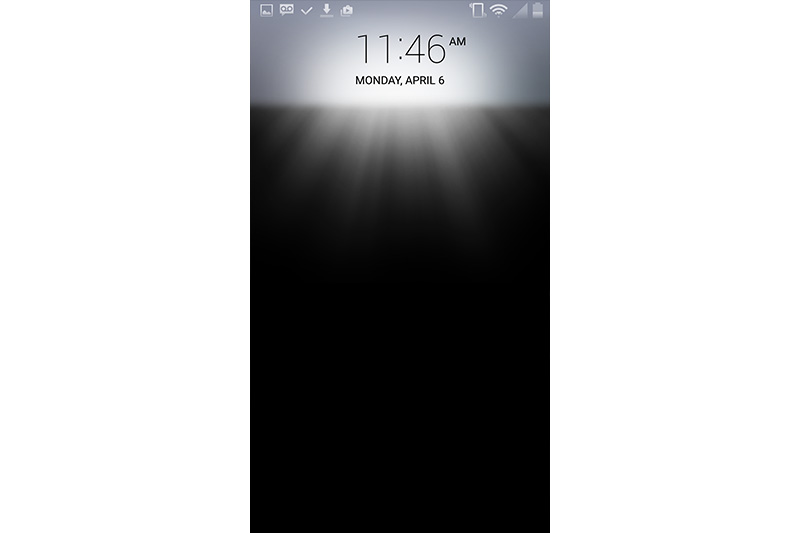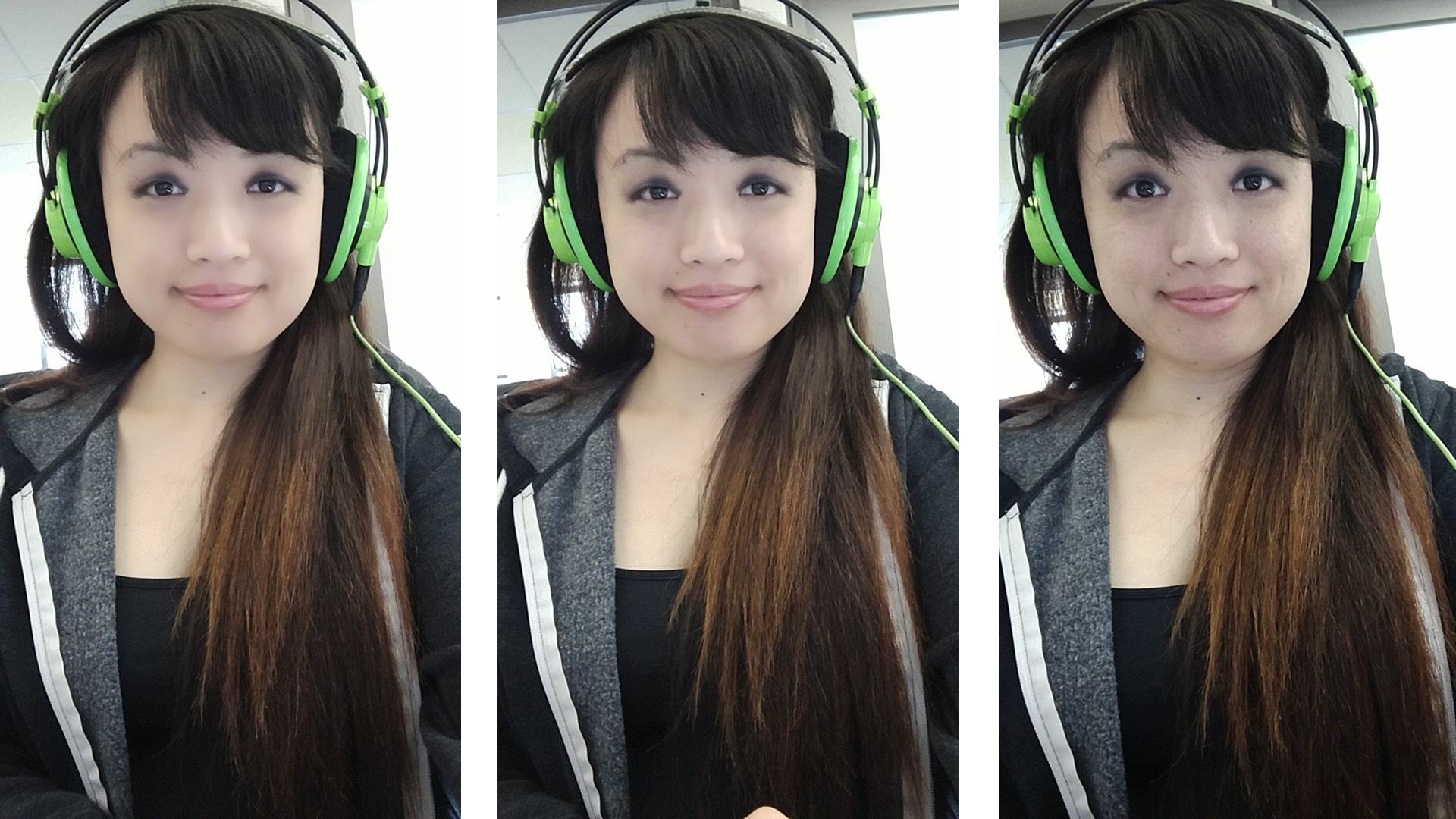Tom's Guide Verdict
The new LG G Flex 2 packs a sharper display in a sexy, curvy body, but it doesn't last long enough on a charge.
Pros
- +
Comfortable curved design
- +
Useful software enhancements
- +
Sharp, immersive display
- +
Above-average performance
Cons
- -
Poor low-light camera performance
- -
Short battery life
Why you can trust Tom's Guide
LG made a splash with the G Flex in 2014, wowing us with the first curved, self-healing smartphone on the market. However, we didn't like its large, unwieldy size and relatively low-res 720p display. Enter the G Flex 2 ($200 with two-year plan on Sprint). Packing a full-HD screen into a more compact body, the new G Flex is sexier than ever. It also features Qualcomm's octa-core Snapdragon 810 processor. However, this sequel doesn't have enough power to last all day.
Design
LG refined the G Flex's design, making it curvier than before. Its chassis features four curvatures of different angles on the display, rear, center and sides, resulting in a sleeker look than on the original G Flex. The curve not only made the device easier to hold on to, but it also cupped my face more naturally when I held it up to talk on the phone, and fit snugly in my back pocket.

Just like the original, the G Flex 2 can be bent flat when facing down, but for a limited period of time, and it can't be bent inward or twisted. I had to apply quite a lot of force to straighten out the G Flex 2, but it did eventually yield. Then, it bounced right back without damage when I lifted my hand.
MORE: Best Smartphones on the Market Now
The G Flex 2's self-healing rear was also enhanced, recovering from scratches 18 times faster than its predecessor. I tossed the phone in my purse without worrying that it would get clawed by my keys.

With a smaller display than its 6-inch predecessor, the 5.5-inch G Flex 2 fits more comfortably in my hand. The sexy, red G Flex 2 is also irresistibly touchable, with its smooth screen and glossy backside begging to be caressed. However, the rear looks a bit oily and smudges easily.

Below the 13-megapixel camera on the G Flex 2's back are the phone's power button and volume rocker. This placement makes it easier to snap a selfie with your index finger, as opposed to trying to reach buttons on the side, but it takes a while to get used to it.
Get instant access to breaking news, the hottest reviews, great deals and helpful tips.

Measuring 5.9 x 3 x 0.27-0.37 inches and weighing 5.4 ounces, the G Flex 2 is heavier and thicker than the 5.1-inch Samsung Galaxy S6 (0.27 inches thick, 4.9 ounces), but thinner and lighter than the 5-inch HTC One M9 (0.38 inches thick, 5.5 ounces).
Display
Whether you're gaming, watching Netflix or browsing Facebook photos, the G Flex 2's 5.5-inch 1920 x 1080-pixel plastic OLED display provides a brilliant canvas. I liked the richness of Scarlett Johansson's bright-crimson hair and the sharpness of Iron Man's suit in a 1080p trailer for The Avengers: Age of Ultron. The slightly curved screen and generous viewing angles made playing games and watching videos more immersive experiences.

Unfortunately, the G Flex 2's display is dimmer than the competition. Its 316-nit display falls short of the brightness of the average smartphone (382 nits), the HTC One M9 (472 nits) and the luminous Galaxy S6 (521 nits).

Producing 122.8 percent of the sRGB gamut, the G Flex 2 can render more colors than the One M9 (94 percent) but fewer than the Galaxy S6 (159 percent). With a Delta-E rating of 3.3, however, the G Flex 2 delivers more accurate colors than the S6 (4.7) and the One M9 (4.3). (Scores closer to zero are better.)

The Flex 2's display was also treated with LG's Dura-Guard Glass chemical and heat enhancement to make it stronger. LG says this treatment makes the display 20 percent more durable than the LG G3.
Audio
While I didn't like how the instruments and vocals clashed in the chorus of Little Big Town's "Day Drinking" on the G Flex 2, the handset's speakers were loud enough to hear over my chatty roommates. John Mayer's voice sounded hollow in "Gravity," too.
OS and LG Software
The G Flex 2 runs Android 5.0 Lollipop with a few software enhancements from LG.

You'll get the same goodies that are on the G3, such as Knock On, which lets you wake up your phone by tapping the lock screen twice, and Knock Code, for unlocking your device with a series of taps. There's also Smart Keyboard, which lets you customize the height of your keys, and Dual Window, for better multitasking.

The new Glance View feature lets you swipe down from the screen, even when the display is off, to get a quick snapshot of your phone's status. When you drag down from the lock screen, a clock widget takes up the top fifth of the display, and you'll see a status bar with indicators for connectivity, battery life and notifications. This is very handy when you just want a summary of what's going on.

A clever new feature, Gesture View, uses face detection to automatically pull up the last image you shot (with the front camera) when you bring the phone closer to your face. While some people may see this as a gimmick, I found it useful and intuitive, saving me from having to tap to scrutinize my selfies.
The company also improved its Gesture Shot tool that lets you trigger a shot by holding out your hand and making a fist. Gesture Shot now recognizes your hand from up to 1.5 meters (about 5 feet) away, which is helpful for selfie-stick lovers.
Performance
With a 2-GHz, 64-bit octa-core Snapdragon 810 processor and 2GB of RAM, the G Flex 2 was mostly zippy in daily use. I enjoyed smooth gameplay as I fragged enemies in N.O.V.A. 3, despite many apps — such as Chrome, Camera, Gallery, Maps and Settings — running in the background. The Gallery app paused for a fraction of a second when I launched it to load the 52 pictures and short videos, but I zoomed in and out of Manhattan on the Maps app without experiencing any lag.

Notching 3,408 on the general performance test Geekbench 3, the G Flex 2 fared better than the average smartphone (2,286) but lagged behind the One M9 (3,818) and the blazing Galaxy S6 (5,120). While the One M9 packs the same Qualcomm Snapdragon 810 CPU as the G Flex 2, the Galaxy S6 is powered by Samsung's octa-core Exynos chip with 3GB of RAM.

The G Flex 2 converted a video from 720p to 480p in just 3 minutes and 30 seconds, making it almost twice as fast as the average smartphone (6:46) and speedier than the One M9 (4:47). It was slower than the Galaxy S6, though, which completed the task in a swift 2:35.
The G Flex 2 trumped its competition on the 3DMark Ice Storm Unlimited graphics test, scoring 23,607. In comparison, the Galaxy S6 scored 21,193, and the One M9 notched 22,804.
Camera Performance
Your friends will be impressed by the pictures you snap with the G Flex 2's 13-megapixel rear camera. Red walls and the blue sky looked vibrant in my shots of Manhattan buildings, and individual steps on fire escapes were tack sharp.

A portrait of my colleague contemplating his lunchtime options against a brick wall is so clear that you can see his individual eyelashes.

The colors in a picture of a snack cart were accurate — red salsa and green guacamole looked true to life.

In low light, however, the G Flex 2 struggled. A shot of my colleagues in a room lit only by light from the outside hallway was muddy and noisy, with the wall in the background covered in speckles. Details like my co-worker's hair and stubble looked mottled, and the co-worker in the middle appeared to have a halo around his head.

Using the dual-tone LED flash, I managed to get a clearer shot, but the image had a green cast overall.

My 1080p video of a group of rowdy adults tossing pingpong balls at one another was vivid, sharp and smooth, with the red plaid pattern on a man's shirt looking bright and clear.
The 2.1-MP f/2.4 selfie cam on the G Flex 2 took sharp but somewhat dull portraits. While the phone accurately rendered every embarrassing flaw on my face, it made my hot-pink iPhone case look pale.

As on other LG phones, such as the G3 and the original G Flex, the G Flex 2 offers what LG calls Soft Light to enhance your selfies. You can drag the slider at the bottom of the viewfinder to set the intensity. With Soft Light set at its max level (8), my skin looked brighter, smoother and more even without looking unrealistic.

Apps
You may need to spend some time cleaning out quite a bit of bloatware on the G Flex 2, which comes loaded with mostly redundant apps from Sprint.

These include the Sprint Fun & Games app store, Sprint Music Plus, Sprint TV & Movies content stores, Family Wall for Sprint (Facebook for your family), Scout navigation app, NASCAR, NBA Game Time and NextRadio.
Battery Life
The G Flex 2's biggest weakness is its lack of endurance. Despite packing a fairly beefy 3,000-mAh battery, this phone (on Sprint) lasted just 6 hours and 32 minutes on our battery test (continuous Web surfing over 4G with the display at 150 nits of brightness).
MORE: 10 Smartphones with the Longest Battery Life
That showing is poorer than the average smartphone (8:29), the Galaxy S6 (8:32 on T-Mobile) and the One M9 (7:14 on T-Mobile).

The G Flex 2 ships with a travel adapter that's designed to charge the device to 50 percent in approximately 40 minutes, so you spend less time waiting for the phone to juice up.
Pricing and Availability
You can get the G Flex 2 on Sprint for $200 down with a two-year plan, lease it for 24 monthly payments of $21, or pay the full price of $504. The phone is coming to AT&T, but no pricing details have been shared yet.

The G Flex 2 is also available via US Cellular for $150 with a two-year contract, 20 monthly payments of $31.50 or a full price of $630.
My review unit is the Sprint-exclusive volcano-red variant, but LG also offers a platinum-silver version.
Bottom Line
With an improved display and nifty new software touches, the G Flex 2 is a definite upgrade over its predecessor. Its smaller size makes it more comfortable to use with one hand, and its above-average performance makes it a dependable companion. The 13-MP camera takes very sharp pictures, too, although it struggles in low light.
The problem for the G Flex 2 is that it doesn't beat the Samsung Galaxy S6. The G Flex 2's curves are sexier, but the Samsung offers faster performance, a sharper quad-HD display and longer battery life. But if you're looking for a smartphone that's both unique and durable, the G Flex 2 is for you.
Cherlynn Low is a Staff Writer at Tom's Guide. When she's not writing about wearables, cameras and smartphones, she's devouring old episodes of Torchwood or The X-Files. Or taking selfies. Follow Cherlynn @cherlynnlow . Follow Tom's Guide at @tomsguide and on Facebook.
Cherlynn is Deputy Editor, Reviews at Engadget and also leads the site's Google reporting. She graduated with a Master’s in Journalism from Columbia University before joining Tom's Guide and its sister site LaptopMag as a staff writer, where she covered wearables, cameras, laptops, computers and smartphones, among many other subjects.


